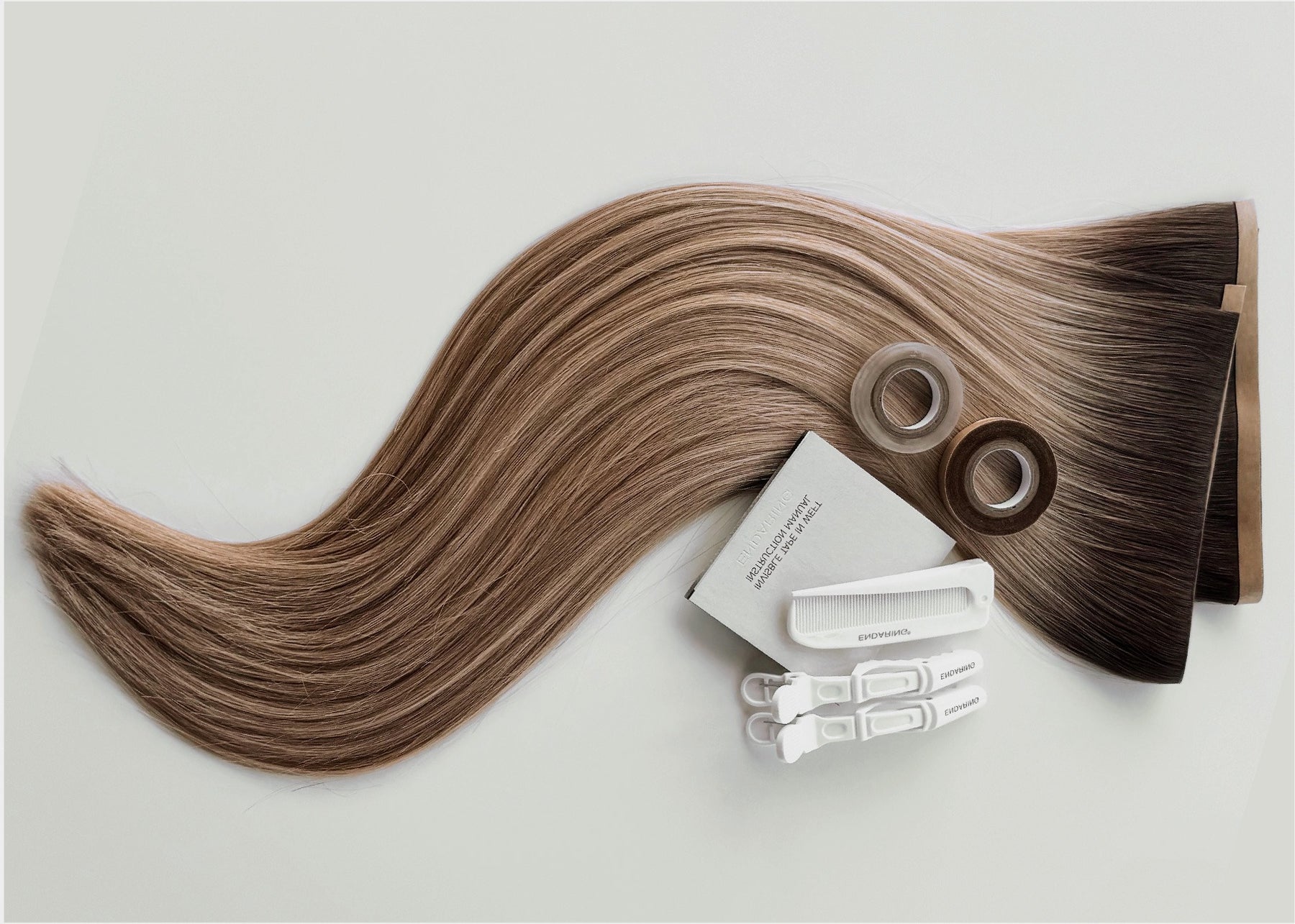- The Science Behind Hydrogen Peroxide and Hair Lightening
Hydrogen peroxide (H2O2) is a chemical compound composed of two hydrogen atoms and two oxygen atoms. It's commonly found in many household products, including disinfectants and hair dyes. When applied to hair, hydrogen peroxide acts as an oxidizing agent. This means it interacts with the natural pigment in your hair, known as melanin. Melanin is what gives your hair its color, and it comes in two types: eumelanin (which provides brown or black color) and pheomelanin (which gives red or yellow color). When hydrogen peroxide is applied, it breaks down the melanin molecules through a process called oxidation. This breakdown leads to the lightening of hair color. The more melanin it oxidizes, the lighter your hair becomes.
This process is the foundation for many hair-lightening techniques, including bleaching and the preparation for hair dyeing. The degree of lightening depends on several factors, including the concentration of hydrogen peroxide, the duration of application, and your hair's natural color and texture. Higher concentrations and longer exposure can lead to more significant lightening effects but also increase the risk of damage.
- Benefits of Using Hydrogen Peroxide on Hair
One of the main benefits of using hydrogen peroxide on hair is its effectiveness as a bleaching agent. It's a popular choice for those looking to go blonde, add highlights, or achieve other lighter shades. Hydrogen peroxide is also relatively easy to access and affordable, making it a convenient option for at-home hair treatments. For those who enjoy DIY hair care, hydrogen peroxide provides a cost-effective solution compared to salon treatments.
Another benefit is its role in preparing hair for coloring. By lightening the hair first, hydrogen peroxide helps ensure that the new color appears more vibrant and true to the intended shade. This is particularly important when transitioning from a darker hair color to a lighter or more vivid one. Hydrogen peroxide can also be used to remove unwanted hair color or correct color mistakes, offering a versatile tool in hair color management.
- Potential Risks and Drawbacks of Hydrogen Peroxide on Hair
While hydrogen peroxide can be beneficial for lightening hair, it also comes with potential risks and drawbacks. One of the most significant concerns is hair damage. Hydrogen peroxide is a strong oxidizing agent, and excessive use can strip your hair of its natural oils, leading to dryness, brittleness, and breakage. Over time, repeated use can weaken the hair shaft, making it more prone to split ends and other forms of damage.
Scalp irritation is another potential risk. Hydrogen peroxide can cause a burning sensation or redness, particularly if you have sensitive skin or leave the solution on for too long. This can lead to discomfort and, in severe cases, chemical burns.
Additionally, achieving even results with hydrogen peroxide can be challenging. Uneven application or improper technique can result in a patchy or inconsistent color. This can be especially problematic when attempting at-home treatments without professional guidance. Finally, hydrogen peroxide can sometimes lead to unexpected color outcomes, such as an unwanted orange or brassy tone, particularly in darker hair.
- Step-by-Step Guide: How to Use Hydrogen Peroxide Safely on Hair
Using hydrogen peroxide on your hair requires careful preparation and application to minimize risks and achieve the desired results. Here’s a step-by-step guide to help you:
- Perform a Strand Test: Before applying hydrogen peroxide to your entire head, test a small section of your hair. This will help you see how your hair reacts and avoid any unexpected results.
- Prepare Your Hair: Start with clean, dry hair. Avoid using any styling products or conditioners before applying hydrogen peroxide.
- Dilute the Hydrogen Peroxide: Use a 3% hydrogen peroxide solution, which is generally safe for hair. You can further dilute it with water if you have sensitive hair or scalp.
- Apply Evenly: Use a spray bottle for even application. Section your hair and spray each section thoroughly, ensuring complete coverage.
- Monitor the Process: Leave the hydrogen peroxide on your hair for 15-30 minutes, depending on the desired level of lightening. Check your hair frequently to avoid over-processing.
- Rinse and Condition: Rinse your hair thoroughly with cool water and follow up with a deep conditioning treatment. This will help restore moisture and reduce dryness.
- Avoid Frequent Use: To prevent damage, avoid using hydrogen peroxide on your hair more than once every few weeks.
- Natural Alternatives to Hydrogen Peroxide for Hair Lightening
If the potential risks of hydrogen peroxide seem too daunting, there are several natural alternatives for lightening your hair:
- Lemon Juice: Lemon juice is a popular natural lightener. Apply freshly squeezed lemon juice to your hair and sit in the sun for an hour. The citric acid in lemon juice, combined with UV rays, helps lighten hair gradually.
- Chamomile Tea: Brew a strong cup of chamomile tea, let it cool, and use it as a hair rinse. Chamomile contains flavonoids that can lighten hair over time. It’s especially effective for those with lighter hair.
- Honey and Cinnamon: Mix honey and cinnamon into a paste and apply it to your hair. Leave it on for a few hours or overnight. Honey contains small amounts of hydrogen peroxide, and cinnamon helps enhance its lightening effect.
- Apple Cider Vinegar: Dilute apple cider vinegar with water and use it as a rinse. It can help lighten hair and also add shine.
- Baking Soda and Hydrogen Peroxide: For a milder approach, mix a small amount of hydrogen peroxide with baking soda to form a paste. Apply this to your hair for a gentle lightening effect.
These natural alternatives are generally safer and less damaging than hydrogen peroxide, though they may take longer to achieve noticeable results. Always remember to condition your hair after using any lightening treatment to maintain its health and shine.





